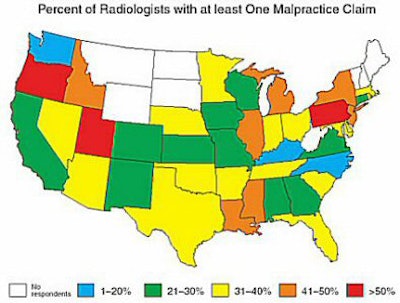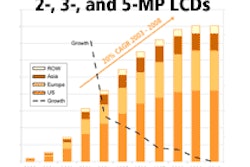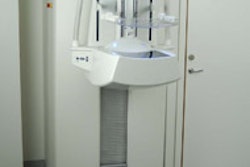
A recent study examined the malpractice history of radiologists affiliated with a 40-state preferred provider organization (PPO), and found that one in three had a malpractice claim on his or her record.
The research, conducted by a team at the University of Medicine and Dentistry of New Jersey in Newark, was presented at the RSNA 2004 conference in Chicago earlier this month.
"All of us are concerned about malpractice," said Dr. Stephen Baker, who discussed the study. "It seems to be an enduring and progressive problem. Looking at the data as best we could, we found that there is a paucity of data about some of the constituents of the suits and even the claims. I had the opportunity to look at data not available to most others because I do credentialing for an organization that allowed me to look at a report from the National Practitioner Data Bank."
The group examined the records of radiologists affiliated with Parsippany, NJ-based One Call Medical. The PPO has about 5,000 affiliated physicians, and represents approximately 14% to 15% of all radiologists in the U.S., according to Baker. In addition, the gender distribution of radiologists in the network equaled that of the U.S. radiologist population, with women comprising about 15% of the study cohort, he said.
The researchers assessed the data for five elements:
- Overall percentage of radiologists with at least one malpractice claim
- Differences, by state, regarding the likelihood of a claim
- Causes of the claims
- Changes in the claim profile through time, pre- and post-1995
- Gender differences regarding the likelihood of malpractice on the basis of claims per radiologist and claims per exam performed
Baker and his team examined the records for 3,937 radiologists. They found 2,600 without claims and 1,337 with at least one malpractice claim, or 33.9% of the surveyed group. The total number of claims for the study was 3,231, Baker said.
 |
| A geographical distribution of malpractice claims against radiologists affiliated with One Call Medical in the U.S. The number of claims varies widely from state to state, with the highest incidence in Pennsylvania, Utah, and Oregon. Image courtesy of Dr. Stephen Baker and the University of Medicine and Dentistry of New Jersey in Newark. |
More than half of the claims filed against the radiologists (1,752) involved a failure to diagnose. In 328 cases, the radiologist's role was peripheral to the main concern of the suit. In 204 cases, there were allegations of complications of therapeutic intervention with imaging. Allegations of negligence accounted for 183 claims, failure to communicate was cited in 75 claims, adverse reaction to contrast comprised 52 claims, and failure to do an additional imaging test resulted in 21 claims. The remaining 616 claims were assigned the category of "other" by the researchers.
Among the failure-to-diagnose cases, the four leading causes were breast disease misinterpretation (476 cases), failure to diagnose cancer (279 cases), missed fractures (260 instances), and failure to recognize an acute vascular condition (148 instances), Baker said.
The overall frequency of claims against radiologists is not appreciably increasing over time, the group concluded, despite an increase in the total number of imaging studies performed. Two categories that have shown a slight increase are failure to diagnose and missed lung cancer. These were offset by a decrease in the breast disease misinterpretation and complications of therapeutic intervention with imaging categories, Baker noted.
On the basis of gender, the researchers found 35.1% of the male radiologists and 27.8% of the female radiologists in the study had malpractice claims. They also found that both male and female radiologists had the same claim incidence, 14.3%, for breast disease versus all claim causes.
This number can be misleading, noted Baker, as 68% of all female radiologists perform diagnostic mammography reading compared to 60% of their male colleagues. In addition, according to Baker, males read 2,101 mammograms per year on average compared to female radiologists, who read an average of 3,364 mammograms per year.
"On a per-case basis, the difference between male and female mammographers widens even more, with women radiologists less apt to be subject to a claim of malpractice," Baker said.
The results of the study provided some surprises to Baker and his team.
"Failure to communicate, which is an issue that we worry about, was not a major cause for malpractice claims, although the incidence is increasing," he said. "The most important result that I see is that among the more than 3,000 suits filed, only 21 were the result of a failure to do additional tests. We worry about this all the time, and it may be a stimulus to the desire to get further tests to avoid liability action."
By Jonathan S. Batchelor
AuntMinnie.com staff writer
December 17, 2004
Related Reading
AMA sets standards for expert witnesses in medical malpractice cases, December 7, 2004
ACR suspends prominent radiologist for malpractice testimony, October 10, 2004
Court allows suit over radiologist's findings in pre-employment x-ray, August 20, 2004
Study sounds alarm over integrity of expert readers' testimony, August 6, 2004
Medical malpractice legislation: An all-around non-starter? July 8, 2004
Copyright © 2004 AuntMinnie.com



















